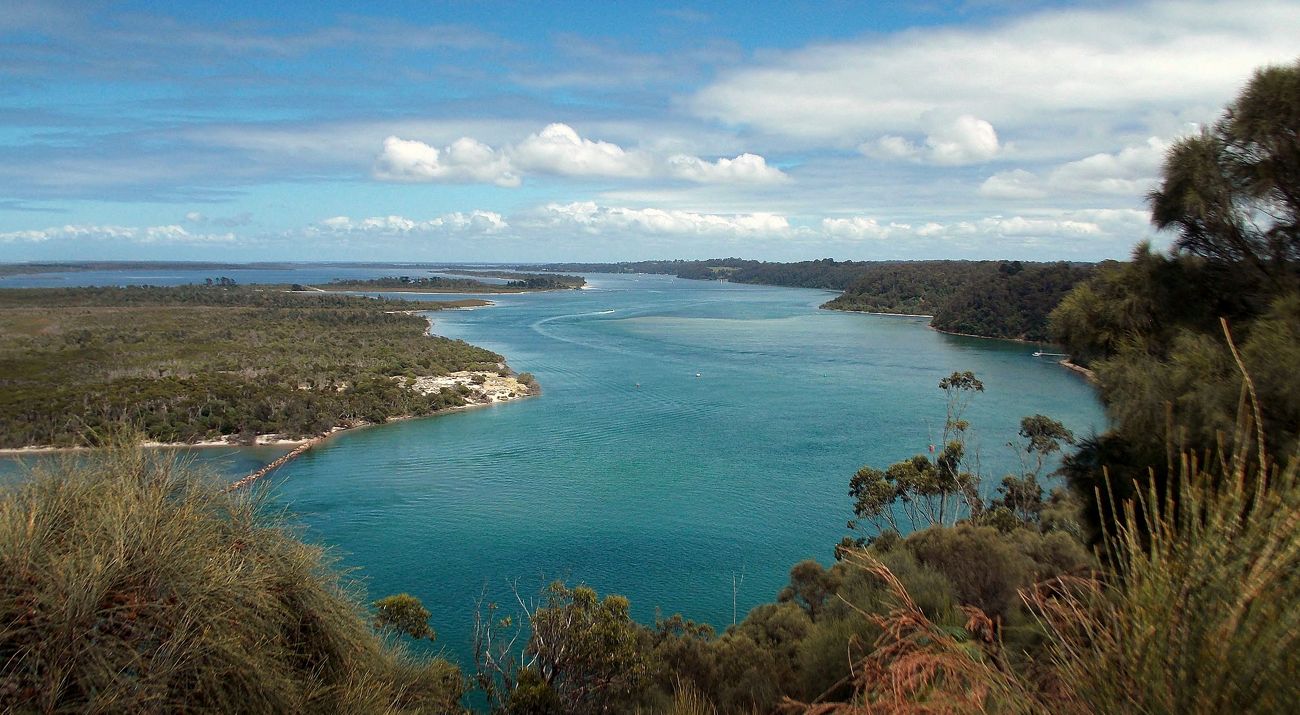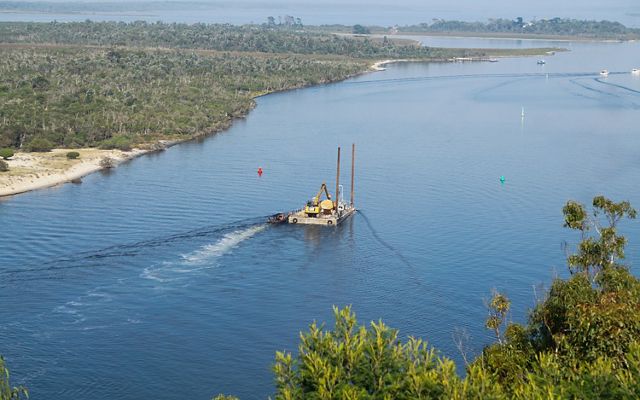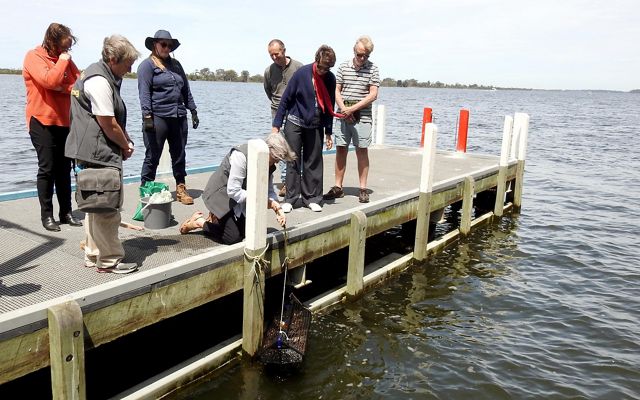
Reef Builder: Restoring Australia's lost shellfish reefs
Shellfish reefs in the Gippsland Lakes
A Reef Builder project
The Gippsland Lakes, located in Gunaikurnai Country, are one of Australia's largest and most beautiful series of coastal lagoons and wetlands. Their waterways cover about 600 square kilometres and boast stunning lakes, vast sand dunes and pristine beaches.
The area is so unique that it’s listed as a wetland of international importance under the Ramsar Convention in recognition of the outstanding coastal wetland values and features.
Not only the utimate recreational destination, the Gippsland Lakes is also the home of thriving underwater ecosystems.
A history of the Gippsland Lakes
The Gippsland Lakes have significant conservation value, due to the habitat they provide for wildlife - including expansive seagrass meadows.
A population of critically endangered Burrunan Dolphins call the area home. Local citizen scientists have identified over 130 fish species and an additional 250 invertebrates that reside in the area, including the Black Bream, King George Whiting and the Bigbelly Seahorse.

Shellfish reefs fell into decline
Across Victoria, Blue Mussel and Australian Flat Oyster reefs were once abundant, but sadly are now scarcely found. For years, these reefs helped clean water, support fish populations and contributed to maintaining overall aquatic biodiversity.
A Blue Mussel fishery operated in the lakes from the 1970’s through to the 1990’s, when abundant mussels covered the seafloor. The first record of Australian Flat Oysters found in the lakes is from 1896 and a small scale oyster dredge fishery also operated in the Gippsland Lakes in the 1920s, but was short lived. The Gippsland Lakes region is unique in that some Blue Mussel reefs persist, but there are no longer oyster reefs in the lakes.
While the Gippsland Lakes maintain lively shellfish ecosystems, the same cannot be said for many other parts of Victoria. In Victoria more than 95% of the shellfish reefs that once covered the bays and estuaries in the state have been lost, and they are now considered functionally extinct.
The Gipplsand Lakes Reef Restoration project
In March 2022, restoration efforts began at a 3 hectare site near Nyerimiland (meaning 'chain of lakes' in traditional language), located between Lakes Entrance and Metung. This involved the construction of 17 reef patches, using locally sourced limestone rock to create reef bases and a new home for shellfish. The reef patches are about half a metre in height and are approximately 7 metres deep. Once constructed, over 3.5 million baby Australian Flat Oysters were 'seeded' onto the reef bases to kick start the recovery process.
Throughout the restoration process, the East Gippsland Catchment Management Authority also ran a community engagement and citizen science program which saw nearly 200 locals getting involved in activities including oyster gardening, fish surveys and school education days.


The reefs are coming back to life
The 12-month post construction monitoring conducted in February 2023 found an average of 3,850 mussels per m2. That’s over 15 million mussels across the reefs that are helping to filter water and boost biodiversity.
We’ve also seen natural recruitment of Australian Flat Oysters onto the limestone reef base, as well as continued growth and survival of the Oyster spat seeded onto the reefs.
The reefs are providing habitat for nearly 30 species of fish and mobile invertebrates (e.g. crabs, sea slugs, sea stars), with more species recorded on the restored reefs compared to both reference mussel beds found elsewhere in the lakes and soft sediment habitats.


It doesn't stop here
Whilst the monitoring frequency naturally changes as the restored reef bases become settled, the reefs are still continually monitored to track progress. TNC's dive team conducted the most recent monitoring in Febryary 2024 and were excited to see the shellfish continuing to mature with some now at reproductive size, and the team observed schools of snapper and drummer as well as ling and whiting calling the reefs home.
TNC also has a permit to restore a further 2 hectares of shellfish reef at a site near Metung. Building on the demonstrated success of the restoration works at Nyerimilang, with further funding TNC is hoping to bring back more shellfish reefs to the Gippsland Lakes in the near future.
For more information on the achievements of the Reef Builder initiative, read the 2024 Reef Builder Final Summary report.
Read more